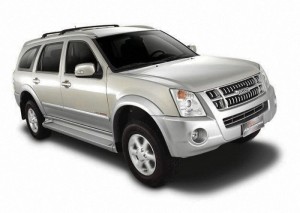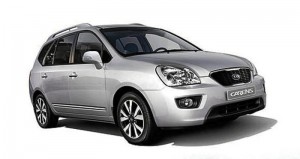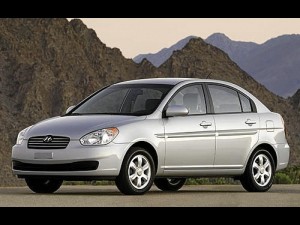The best rides to combat high fuel prices

Nowadays, the high cost of fuel definitely has become a factor in buying a car, influencing buyers to get a more fuel-efficient model or variant.
But which one?
Since 2002, the Department of Energy (DoE) has been organizing fuel economy drive events not only for its fuel-efficient driving campaign but also to provide a validated chart that may guide car buyers whenever they want to compare fuel consumption of various makes and models of vehicles.
But it was not until 2008 onwards that this annual event started to merit so much attention from the public.
The results proved useful even for car companies, especially those who would like to highlight their most fuel-efficient models.
Article continues after this advertisementHistoric
Article continues after this advertisement
This highlights the department’s effort not only to tell the public to consider models that are not only fuel-efficient but also one that could also reduce emissions.
These DoE tests also highlighted the fact that vehicles belonging to the same category carry different price tags (diesel variant is usually priced much higher than their gasoline counterpart), built as well as designed differently that a would-be car buyer should also consider the so-called “payback time” whenever he or she evaluates or compares models. Payback time refers to the point at which one’s savings on fuel will exceed the extra money forked over in order to get a more fuel-efficient vehicle.
Here are some models (with their corresponding fuel efficiency) that should merit your attention:
Suzuki Celerio subcompact hatchback (manual 1.0L gasoline)—34.34 km/L; you spend just P1.15 per km
Suzuki Alto subcompact hatchback (manual 0.8L gasoline)—34 km/L; you spend just P1.38 per km
Suzuki Celerio subcompact hatchback (automatic 1.0L gasoline)—21.92 km/L;
you spend just P1.80 per km
Chevrolet Spark subcompact hatchback (manual 1.2L gasoline/manual 1.0L gasoline)—22 km/L
Chevrolet Spark subcompact hatchback (automatic 1.0L gasoline)—19 km/L
Kia Motors’ Picanto subcompact hatchback (manual 1.1L gasoline)—20.8 km/L
Honda Jazz compact hatchback (automatic 1.5L gasoline)—27.58 km/L; you spend just P1.43 per km
Honda City compact sedan (manual 1.3L gasoline)—20.67 km/L; you spend just P1.91 per km
Ford Fiesta compact hatchback (automatic 1.6L gasoline)—21.86 Km/L
Hyundai Getz compact hatchback (manual 1.5L diesel)—25.22 km/L; you spend just P1.82 per km
Hyundai Accent compact sedan (manual 1.5L diesel)—23.38 km/L; you spend just P1.97 per km
Toyota Prius mid-size sedan (automatic 1.8L gasoline-electric hybrid)—24.23 km/L; you spend just P1.63 per km
Toyota Corolla Altis mid-size sedan (manual 1.6L gasoline)—15.48 km/L; you spend just P2.54 per km
Toyota Vios compact sedan (automatic 1.5L gasoline)—15.44 km/L; you spend just P2.55 per km
Ford Focus compact hatchback (manual 2.0L diesel)—21.39 km/L; you spend just P2.15 per km
Isuzu D-Max 4×2 pickup (manual 2.5L diesel)—20.57 km/L; you spend just P2.24 per km
Toyota Hilux pickup (manual 2.5L diesel)—19.12 km/L; you spend just P2.40 per km
Mitsubishi Strada 2×4 pickup (manual 2.5L Diesel)—18.57 km/L; you spend just P2.48 per km
Mazda CX-7 mid-size SUV (automatic 2.5L gasoline)—18.17 km/L; you spend just P2.17 per km
Isuzu Alterra 4×2 full-size SUV (manual 3.0L diesel)—19.44 km/L; you spend just P2.37 per km
Kia Carens multipurpose vehicle (manual 2.0L diesel)—19.25 km/L; you spend just P2.39 per km
Toyota Innova multipurpose vehicle (manual 2.5L diesel)—18.41 km/L; you spend just P2.50 per km
Isuzu Sportivo Asian utility vehicle (manual 2.5L diesel)—18.03 km/L; you spend just P2.55 per km
BMW 320d compact luxury sedan (automatic 2.0L diesel)—20.53 km/L; you spend just P2.24 per km
BMW X3 compact luxury SUV (automatic 2.0L diesel)—16.63 km/L; you spend just P2.76 per km
Volvo S40 compact luxury sedan (automatic 2.0L gasoline)—13.52 km/L; you spend just P2.91 per km
Those who love fast cars ridicule them, and those who admire SUVs find these two diminutive rides too claustrophobic for comfort. But things have changed. Increasingly worried over frequent rise in the prices of gasoline, Filipino car buyers have fallen in love with these two cute offerings from Suzuki that offers not only very low price tag but also higher fuel efficiency and lower running cost. And carmakers are quick to take note of this trend.
It should be interesting to note that another subcompact model proved that with small engine, compact and light weight body would result in fantastic fuel-efficiency rating. This time, Chevrolet Philippines teamed up with rally cross and rally racing events organizer Roadwise Motoring Foundation and Automobile Association of the Philippines to make the fuel-efficiency test possible.
The Picanto topped last year’s edition where the 28 participating vehicles drove 162.8 kilometers starting from DoE office in Fort Bonifacio, Taguig City to Lipa City Hall in Batangas and back. This is the model that achieved a 26.2 km/L fuel efficiency rating in a field test conducted by Kia Philippines.
Apart from the DoE-organized fuel-efficiency run, the Jazz also made headlines in the Petron Xtra Mile Challenge especially in the 2008 edition, when an automatic 1.3 Jazz ran 1,402.4 km on a single tank of fuel. This figure broke the previous records set by motoring icon Pocholo Ramirez (1,114 km) in 2005 and Team Zayco Hermanos (1,400 km) in 2006.
The Fiesta recently made world headlines when this Ford gem traveled more than 800 km on a single tank of gas, driving from Chiang Mai to Bangkok in Thailand. Two models were used, 1.6L Fiesta Sport 5Dr hatchback model and 1.6L Fiesta Sport 4Dr sedan model. The Fiesta 5Dr Sport achieved a 19.79 km/L.
The Korean automaker has attracted the attention of car buyers, thanks to its models’ innovative, edgy designs. But even before this, Hyundai became famous for introducing diesel-powered engine in passenger cars here in the Philippines.
Introduced in 1997, the Prius has become the best-selling hybrid in the world with more than 3 million vehicles already sold worldwide. As the world’s first mass-produced gasoline-electric hybrid, the Prius helps curb emission levels or global warming carbon dioxide—by approximately 18 million tons—equivalent to what would have been emitted by gasoline-powered vehicles of similar size and performance for 14 years.
Coming up with reasonably priced, long-lasting vehicles has made Toyota the best-selling brand here in the Philippines. What made the 2009 edition of the DoE fuel economy run more interesting for Toyota is the fact that these two models, belonging to two separate segments, finished with an almost identical kilometers per liter fuel consumption.
In the 2010 Ford Focus Coast to Coast Challenge (Sorsogon in Bicol to Pagudpud in Ilocos Norte), this model set a new fuel economy record of 25.9 km/L after covering 1,432.3 kilometers on a single tank of diesel.
These three heavy duty and ubiquitous diesel-powered workhorses from the country’s most trusted brands should merit car buyers’ attention because despite their powerful engines, they could still deliver great savings for their owners.
It’s interesting to note that in an Isuzu Philippines Corp.’s organized fuel-efficiency run held last year, a manual 4×2 D-Max averaged 24.26 km/L after running 1,844 kilometers on one full tank of diesel.
Another interesting result in the SUV category of the 2008 DoE Fuel Economy Run was the fact that despite its 1.775-ton weight and big engine displacement, the Alterra still exhibited an excellent mark when compared with the rest of the participants powered by more advanced or smaller displacement engines.
Looking for a reasonably priced family transporter? Consider these three top fuel misers as tested by the DoE.
Of course, the DoE fuel economy runs also invited a number of multimillion-peso luxury models. While fuel-efficiency rating would likely be the least of their would-be buyers’ concern, it is interesting to note that these three models made significant marks in besting their equally expensive counterparts.



